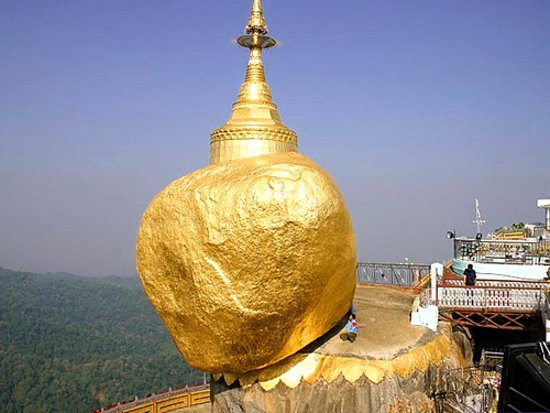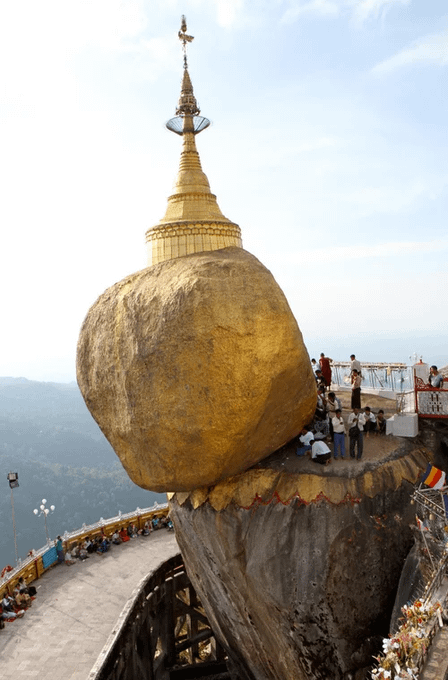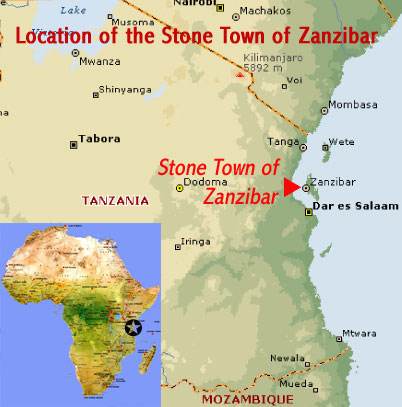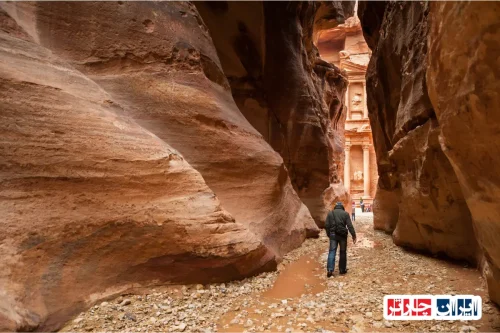Discover the Majestic Golden Rock Pagoda in Mon State Myanmar: A Spiritual and Architectural Wonder
Experience the awe-inspiring beauty and spiritual significance of the Golden Rock Pagoda in Mon State Myanmar. This iconic monument, renowned for its unique balance and sacred history, attracts millions of visitors each year. The Golden Rock Pagoda in Mon State Myanmar stands as a testament to Myanmar’s rich cultural heritage, blending remarkable architecture with profound religious symbolism. Whether you are seeking spiritual enlightenment or marveling at its engineering marvel, the Golden Rock Pagoda in Mon State Myanmar offers an unforgettable experience that embodies faith, tradition, and natural beauty. The site’s legendary story, its breathtaking views, and the vibrant ceremonies held here make it a must-visit destination for travelers and pilgrims alike. Discover why this sacred site continues to inspire awe and devotion, and learn about its significance in Myanmar’s cultural landscape.

Historical Legends and Mythical Stories of the Golden Rock Pagoda in Myanmar
The Golden Rock Pagoda in Myanmar, with its rich history and legendary tales, stands as a symbol of the deep spiritual beliefs of the local people. According to local legends, this sacred site was built based on divine stories and reflects the profound connection between the community and their faith. Its origins date back to medieval times, attracting thousands of pilgrims annually who come to witness this historic marvel.
The myths surrounding the Golden Rock Pagoda narrate stories of spiritual power and miraculous events associated with it. One of the most famous legends involves a strand of hair from Lord Buddha that rests on the rock, maintaining its perfect balance. These stories form a vital part of Myanmar’s cultural and religious identity, emphasizing the significance of this sacred place.
Over centuries, the Golden Rock Pagoda has served as a spiritual center and gathering place for Buddhists. Religious ceremonies and special rituals held here demonstrate the community’s deep respect for their history and beliefs. These narratives not only enrich the site’s historical value but also symbolize the faith and culture passed down through generations.
Unique Architecture and Structural Design of the Kyaiktiyo Pagoda in Myanmar
The architecture of the Golden Rock Pagoda exemplifies Myanmar’s craftsmanship and artistic tradition. The structure is built atop a massive natural boulder that appears to defy gravity, perfectly balanced on a small point. This engineering marvel has earned recognition as one of nature’s wonders and captivates every visitor with its ingenuity.
The base of the pagoda includes a small stupa and shrine covered in pure gold leaf, standing approximately 7 meters tall. Positioned beside the massive boulder, it symbolizes faith and resilience. The design combines traditional religious architecture with natural elements, creating a breathtaking harmony between man-made art and nature.
Surrounding the pagoda are viewing platforms and walking paths that allow visitors to enjoy panoramic views of the surrounding landscape. The layout emphasizes balance and spiritual harmony, reflecting Myanmar’s reverence for nature and religious symbolism. This architectural style highlights respect for natural beauty and spiritual beliefs, making it a true masterpiece.
The Secret of Balance and the Extraordinary Attraction of the Golden Rock in Myanmar
The Golden Rock in Myanmar is renowned for its natural and engineering wonder—an enormous boulder seemingly teetering on the edge of a cliff, balanced on a tiny point. It appears as if it is held in place by a single strand of Buddha’s hair, symbolizing faith and divine intervention. This miraculous balance draws millions of visitors and pilgrims each year.
Local beliefs hold that the rock’s stability is maintained by a strand of Buddha’s hair, adding spiritual significance to its precarious position. This legend reinforces the idea of divine power and the deep spiritual connection between humans and their faith. The site’s awe-inspiring balance is a testament to Myanmar’s cultural reverence for miracles and spiritual resilience.
The visual spectacle of the floating boulder, combined with its spiritual symbolism, makes it a major attraction. Visitors are captivated by the natural wonder and the stories of faith that surround it, making the Golden Rock a symbol of perseverance and divine grace in Myanmar’s cultural landscape.
Cultural and Religious Significance of the Pagoda in Myanmar’s Daily Life
The Golden Rock Pagoda is more than a historic monument; it is a core element of Myanmar’s cultural and spiritual identity. Serving as a focal point for Buddhist followers, it hosts numerous religious ceremonies and festivals that reinforce community bonds and spiritual devotion. Its presence embodies the collective faith and resilience of the people.
Many believe that visiting and praying at the pagoda brings blessings and good fortune. Rituals such as offering gold leaf on the rock and collective prayers are common practices that deepen the spiritual connection. These traditions are integral to Myanmar’s cultural fabric, symbolizing faith, hope, and unity across generations.
Throughout history, the Golden Rock Pagoda has played a vital role in strengthening communal identity and preserving religious traditions. It remains a place where people gather for spiritual renewal, cultural celebrations, and to honor their heritage. Its significance permeates daily life, representing enduring faith and cultural pride.
Travel Routes and Access to the Golden Rock Pagoda in Myanmar
Reaching the Golden Rock Pagoda involves several scenic routes, each offering a unique experience. The main trail begins from the village of Kinpun, involving a trek through mountainous terrain. This journey is considered part of the spiritual pilgrimage, adding to the reverence of the visit.
Accessible by both road and foot, visitors can choose between a comfortable vehicle ride or a challenging hike. The approximately 11-kilometer trail features natural landscapes and mountain views, making the journey itself a meaningful part of the pilgrimage. Proper preparation and respect for local customs enhance the experience.
It’s important to observe local traditions, such as removing shoes before entering sacred areas and respecting religious practices. Facilities along the route ensure safety and comfort for pilgrims and tourists alike. The journey to the pagoda is a spiritual adventure that deepens the connection to Myanmar’s religious heritage.
Festivals and Special Rituals Celebrated at the Golden Rock Pagoda
Throughout the year, significant Buddhist festivals and special ceremonies take place at the Golden Rock Pagoda. During full moon days and religious holidays, the site becomes lively with devotees participating in vibrant rituals. Lighting thousands of candles and collective prayers create a profound spiritual atmosphere.
Key rituals include applying gold leaf to the rock and chanting prayers, symbolizing devotion and unity. These events foster a sense of community and reinforce the spiritual importance of the site. Visitors experience a deep sense of reverence and connection during these celebrations.
In addition to religious ceremonies, local festivals and cultural events are held nearby, showcasing Myanmar’s rich traditions. These occasions serve to preserve and promote the cultural heritage, making the Golden Rock Pagoda a living symbol of faith and cultural pride for the community.
Tourism Impact and Heritage Preservation at the Golden Rock Pagoda in Myanmar
Tourism plays a vital role in supporting the local economy and promoting Myanmar’s cultural heritage. Visitors from around the world come to admire the Golden Rock Pagoda, bringing awareness and appreciation for its historical and spiritual value. Sustainable tourism practices are essential to protect this sacred site.
Efforts have been made to restore and maintain the structural integrity of the pagoda and surrounding areas. Educational programs and visitor guidelines help ensure respectful behavior and conservation. These initiatives aim to balance tourism growth with heritage preservation.
Enhanced facilities and infrastructure improve visitor experience while safeguarding the site’s authenticity. Promoting responsible tourism ensures that future generations can continue to cherish this iconic symbol of Myanmar’s spiritual landscape, supporting both cultural preservation and economic development.
Best Viewing Moments and Scenic Vistas at the Golden Rock Pagoda
Visiting the Golden Rock Pagoda offers breathtaking views, especially during sunrise and sunset. The golden hue of the rock illuminated by natural light creates a mesmerizing scene that leaves visitors in awe. These moments are perfect for photography and reflection.
The panoramic vistas from the surrounding platforms showcase lush landscapes and mountain ranges, emphasizing the harmony between nature and spirituality. The changing light throughout the day offers different perspectives, enriching the visitor experience.
At night, the illuminated pagoda and the reflection of lights on the rock produce a magical atmosphere. Witnessing these scenic views fosters a sense of peace and spiritual connection. These unforgettable moments make the pilgrimage to Myanmar’s Golden Rock Pagoda truly special.
Traditions and Religious Etiquette for Visitors to the Golden Rock Pagoda
Respectful behavior and adherence to local customs are essential when visiting the Golden Rock Pagoda. Visitors are expected to remove their shoes before entering sacred areas and dress modestly to show reverence. Participating in rituals like offering gold leaf and prayers demonstrates devotion.
During religious festivals and ceremonies, it’s customary to observe silence and behave respectfully. Engaging with local traditions, such as joining prayer sessions or making offerings, enhances the spiritual experience and shows appreciation for Myanmar’s cultural heritage.
Understanding and practicing these etiquettes help preserve the sanctity of the site and foster a respectful environment for all visitors. The traditions surrounding the Golden Rock Pagoda reflect Myanmar’s deep-rooted faith and cultural identity, making every visit a meaningful spiritual journey.

FAQ about the Golden Rock Pagoda in Myanmar
- What is the historical significance of the Golden Rock Pagoda?
- The Golden Rock Pagoda is a symbol of Myanmar’s spiritual heritage, believed to have been built based on divine legends. Its origins date back to medieval times, serving as a sacred site for pilgrims and a testament to the deep-rooted Buddhist traditions of the region.
- What legends are associated with the Golden Rock?
- One of the most famous legends involves a strand of Buddha’s hair that balances the massive boulder, symbolizing divine power and faith. This miraculous balance is thought to be maintained by spiritual forces, reinforcing the site’s sacred status.
- What is unique about the architecture of the pagoda?
- The pagoda is built atop a naturally balanced boulder that appears to defy gravity. Its base features a small stupa covered in gold leaf, harmoniously blending natural elements with traditional religious design, creating a breathtaking sight.
- How does the Golden Rock symbolize balance and resilience?
- The rock’s precarious position, seemingly held in place by divine intervention, embodies spiritual resilience. It attracts millions of visitors who see it as a symbol of faith, perseverance, and divine grace.
- What role does the pagoda play in Myanmar’s daily life?
- It is a central place for religious ceremonies, festivals, and community gatherings. Many believe that praying here brings blessings, and rituals like offering gold leaf strengthen spiritual bonds among devotees.
- How can visitors access the Golden Rock Pagoda?
- Visitors can reach the site via scenic routes starting from Kinpun village, either by vehicle or on foot. The journey involves a trek through mountainous terrain, adding to the spiritual experience.
- What are the main festivals celebrated at the pagoda?
- Major Buddhist festivals, especially during full moon days, feature rituals like lighting candles, offering gold leaf, and collective prayers, creating a vibrant spiritual atmosphere.
- How does tourism impact the preservation of the site?
- Tourism supports local economy and awareness but requires sustainable practices. Restoration efforts and visitor guidelines help protect the site’s integrity for future generations.
- What are the best times to visit for scenic views?
- Sunrise and sunset offer stunning vistas, with the golden hue illuminating the rock. Night visits also provide a magical atmosphere with illuminated pagoda reflections.
- What customs should visitors observe when visiting?
- Respect local traditions by removing shoes, dressing modestly, and participating in rituals like offering gold leaf. Silence and respectful behavior during ceremonies are also important.
- What makes the Golden Rock a symbol of Myanmar’s culture?
- Its legends, spiritual significance, and architectural harmony embody Myanmar’s deep Buddhist roots, resilience, and cultural pride, making it a national icon.
- Are there facilities for pilgrims and tourists?
- Yes, the site offers amenities like viewing platforms, walking paths, and rest areas, ensuring comfort while maintaining its sacred atmosphere.
- What environmental efforts are in place to protect the site?
- Conservation programs focus on minimizing environmental impact, promoting responsible tourism, and restoring natural and structural elements of the pagoda.
- How can I best prepare for my visit?
- Wear comfortable shoes, carry water, respect local customs, and plan your visit during favorable weather to enjoy the scenic views and spiritual experience fully.
- What is the significance of the golden color of the pagoda?
- The gold symbolizes purity, spiritual enlightenment, and the sacred nature of the site, reflecting Myanmar’s rich religious traditions and craftsmanship.

























